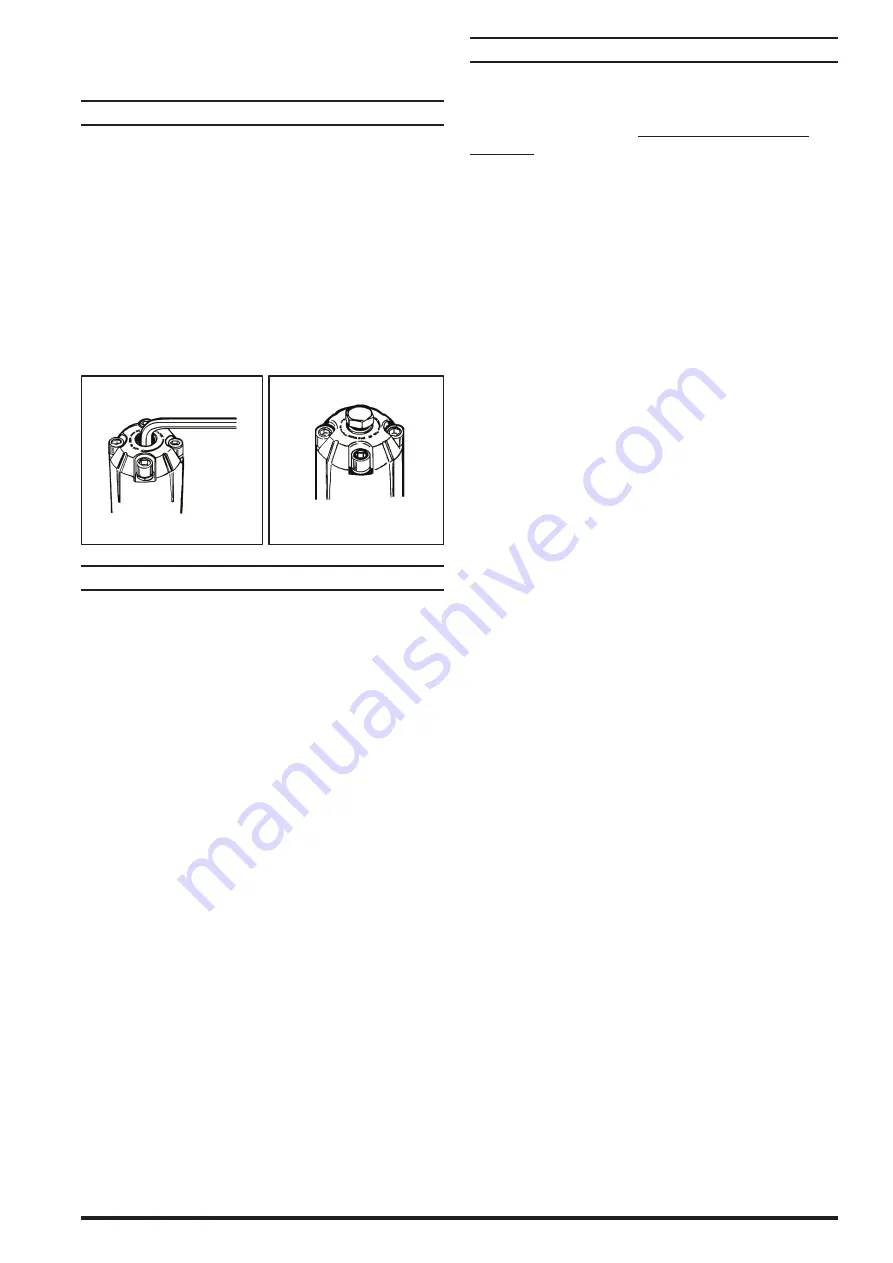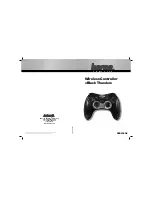
651785 (en)
Page 3 of 8
REGULATOR DISASSEMBLY
FOR “WARNINGS”, REFER TO “OPERATING AND SAFETY
PRECAUTIONS” ON PAGE 2 FOR DETAILS.
BEFORE SERVICING, READ “WARNING: DISASSEMBLY
HAZARD”. FOUND ON PAGE 2.
TOOLS REQUIRED: Small bench vise, 5/32” allen wrench, 3/8”
allen wrench, torque wrench and Loctite 242.
NOTE: It is not always necessary to remove the regulator
from the fluid line to service or inspect only the valve section.
BEFORE DOING ANY IN-LINE SERVICE, ALL FLUID PRES-
SURE MUST BE RELIEVED. HEED ALL WARNINGS FOUND
ON PAGE 2.
VALVE SEAT NOTE: Before deciding to order a repair kit to
service the regulator, check the easiest things first. Remove
and inspect the valve seat for dirt, foreign matter, damage or
wear (step 1).
1. Remove the (29) seat plug and (28) “O” ring, releasing (27)
flow tube, (26) spring, (25) ball, (24) seat and (23) “O” ring.
2. Remove four (1) bolts and (2) lock washers, releasing (3)
housing.
NOTE: The (6) adjusting screw [with (8) adjustment nut], (5)
thrust bearing and (4) washer are retained by (7) plate, which
is pressed into place. It should not be necessary to disassem-
ble these parts during normal service.
3. Remove (11) plate and (10) spring from (3) housing.
4. Remove (15) cap screws, releasing (16) plate.
5. Remove the stem / diaphragm / piston assembly.
6. Place the assembly in a vise, clamping on flats of (21)
stem assembly.
7. Using a 5/32” Allen wrench, remove the (12) cap screw,
releasing (13) lock washer, (14) piston, (17 and 18) dia-
phragms and (19) “O” ring.
does not have to be unthreaded from the pumping system.
Be certain to relieve system pressure (See “WARNING: DISAS-
SEMBLY HAZARD”).
MAINTENANCE
y
Disassembly should be done on a clean work bench and
use clean cloths.
y
If replacement parts are necessary, refer to the parts list
and drawings on pages 4 and 5.
y
Upon reassembly, lubricate parts and use Loctite where
indicated. Follow the torque specifications as shown.
y
Service kits are available which include parts typically
needed for an overhaul.
y
Keep good records of service activity and include the
regulator in a preventive maintenance program.
y
Certain ARO “Smart Parts” are indicated with a “
V
” in the
parts list, these parts should be available for fast repair
and reduction of down time.
VIEW OF SPRING
ADJUSTMENT PROCEDURE.
Figure 4
VIEW OF FLUSH-OUT PLUG
Figure 5
TROUBLE SHOOTING
No fluid pressure.
y
Check for damaged or worn diaphragms.
y
Look for possible obstruction by hardened material or
foreign matter, periodically use the regulator “flush-out”
feature. Use a fluid filter upstream from the regulator.
Pressure creeps above the setting when system is dead
ended and in a static (no flow) mode.
y
Check for dirty seat and clean as appropriate.
y
Check for worn or damaged seat and replace if necessary.
Outlet pressure drops below setting.
y
Check pump for proper operation and check for possible
leakage problems.
y
Look for a clogged supply line problem, flush the supply
line.
Fluid leakage from spring housing.
y
Check the (1) bolts and the (15) cap screws and re-torque
as needed.
y
Check for damaged diaphragm, replace as needed.
Regulator will not function, even when dispensing de-
vice is opened.
y
Check for possible obstruction in the fluid line.
y
Inlet pressure is too high causing a “Lock-Out” situation.
Read “WARNING: MISAPPLICATION HAZARD” found on
page 2.

























